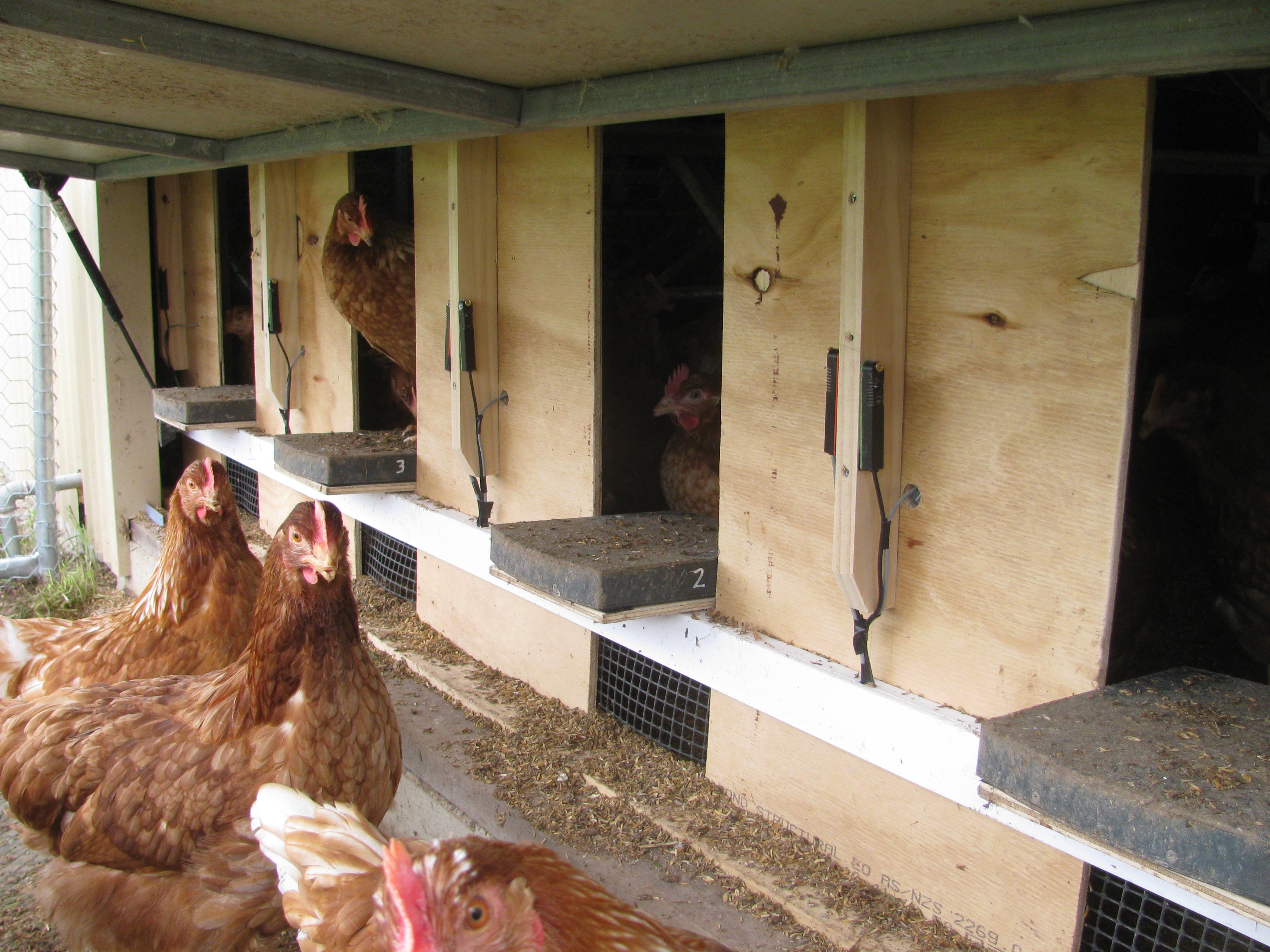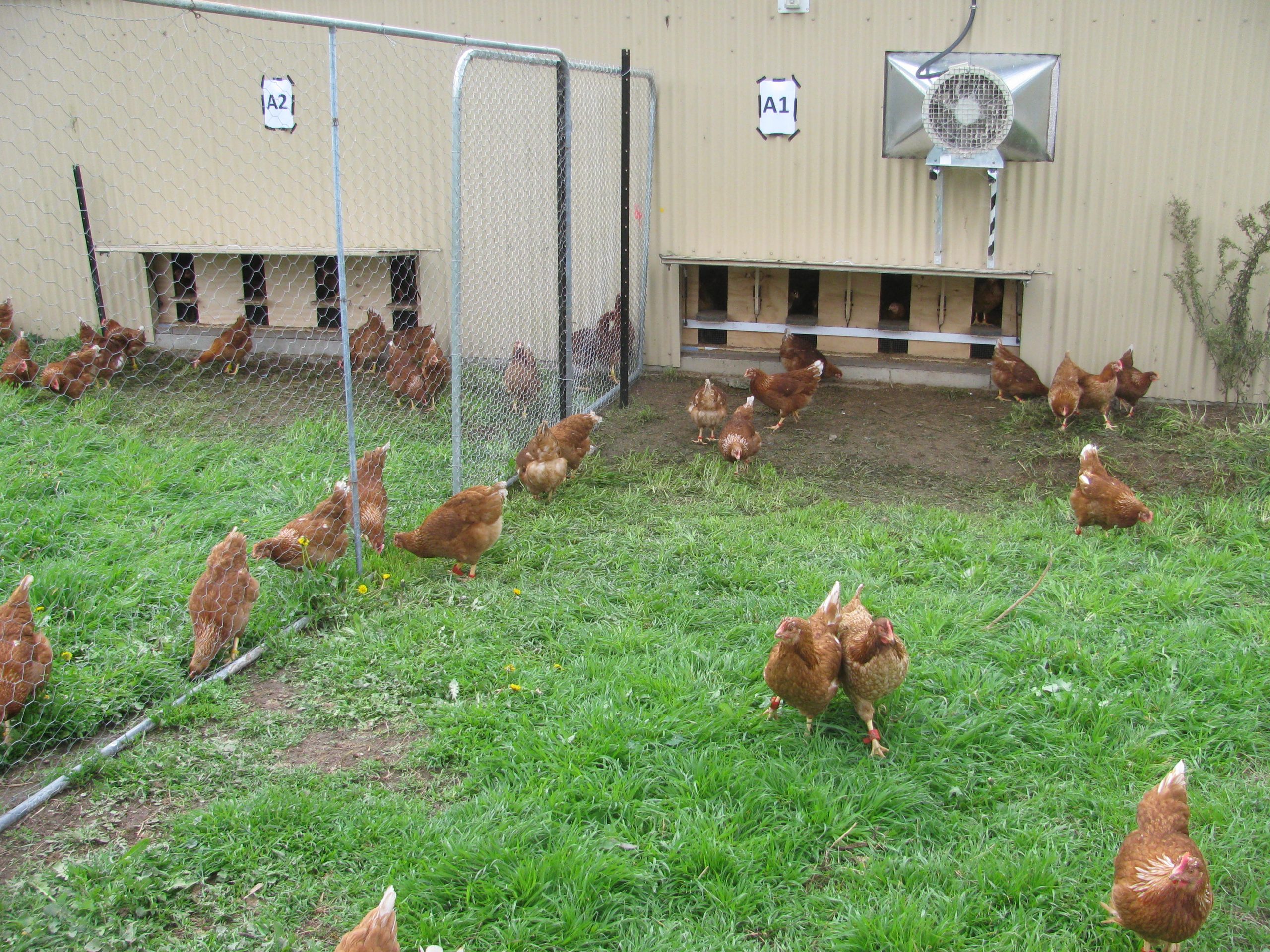For free-range laying hens, it seems stocking them at 10,000 birds per hectare does not dramatically increase bird stress, provided the farm is well-managed and there is sufficient indoor space for the birds to rest after foraging or dust bathing.
The latest paper, still awaiting publication, to come out of the Poultry CRC’s research project Outdoor stocking density in free-range laying hens: Effects on welfare indicates that there are no implicit health issues arising from stocking birds up to 20,000 per hectare (hens/ha), or as low as 2000 hens/ha. As Dr Dana Campbell, CSIRO and University of New England post-doctoral researcher on the project said “using basic external health assessments, the birds from each of the three stocking densities, 2000, 10,000 and 20,000 hens/ha, were in good condition with few differences between stocking densities throughout the study”. Dana cautions though that “these were small experimental flocks with attentive management, likely contributing to why the birds were physically in good condition, and, they were still in the peak production stage at the end of the trial.”

Of course, stocking densities on farm are the subject of intense consumer interest and public debate because people care about the welfare of laying hens, and this concern has been a prime mover in the shift towards the greater demand for free range eggs amongst Australian consumers. In response to this public debate, on 31 March 2016, the Australian Consumer Affairs Ministers released a free-range egg labelling information standard requiring hens to have “meaningful and regular access to the outdoors, with outdoor stocking of no more than one hen per square metre (maximum 10,000 hens per hectare)”. As Dana says, “despite the decision, scientific data on the effects of outdoor range stocking density on hen welfare are not documented but are necessary for an objective determination of optimal outdoor space requirements for free-range laying hens.”
One of the most interesting outcomes of the study was the finding that at 35 weeks of age for birds stocked at 10,000 hens/ha, the egg albumen corticosterone concentrations which are used as a measure of stress, showed the smallest change across time. While it’s too early to take this at face value, as there is a need for further data to accurately interpret the albumen corticosterone measures in relation to short- and long-term stressors and overall adaptability of birds, this finding does suggest that the maximum stocking density set by the Australian Consumer Affairs Ministers was not unreasonable. And this is supported by the finding that the albumen corticosterone concentrations at 35 weeks of age indicated birds stocked at 20 000 hens/ha were more stressed than birds kept at lower stocking densities.
Behavioural observations of hens indoors and outdoors showed that when hens were provided the choice they preferred to dust bathe and forage outdoors but rest indoors, and the frequencies of all behaviours were affected by stocking density to varying degrees. The previous publication by Dr Campbell and colleagues ‘Outdoor stocking density in free-range laying hens: radio-frequency identification of impacts on range use’ that was released online on June 22, 2016 in the journal Animal showed hens in the lowest stocking used the range the most and hens in the highest stocking density used the range the least. With more hens going outside, hens in the lowest stocking density thus had more space indoors which enabled birds to rest more easily as they were less likely to be disturbed by other birds. There was also a clear relationship between resting outdoors and stocking density. Birds in the lowest stocking density rested outdoors the most; birds at the highest stocking density rested the least.

These results show that outdoor stocking density does impact how much hens will use the range and the frequencies of specific behaviours that are important for hen welfare. But management likely plays a strong role in maintaining birds in good condition. The next step would be to apply these research techniques to commercial farms to see if the same patterns are observed in large-sized flocks.


